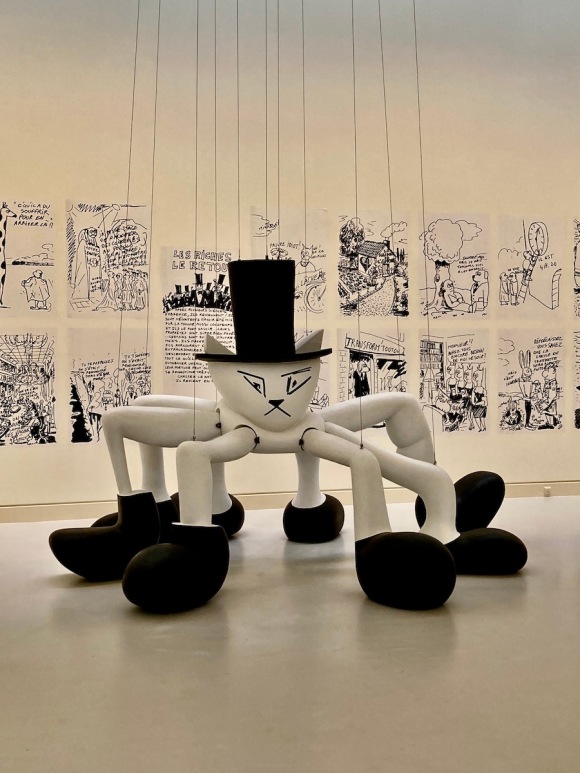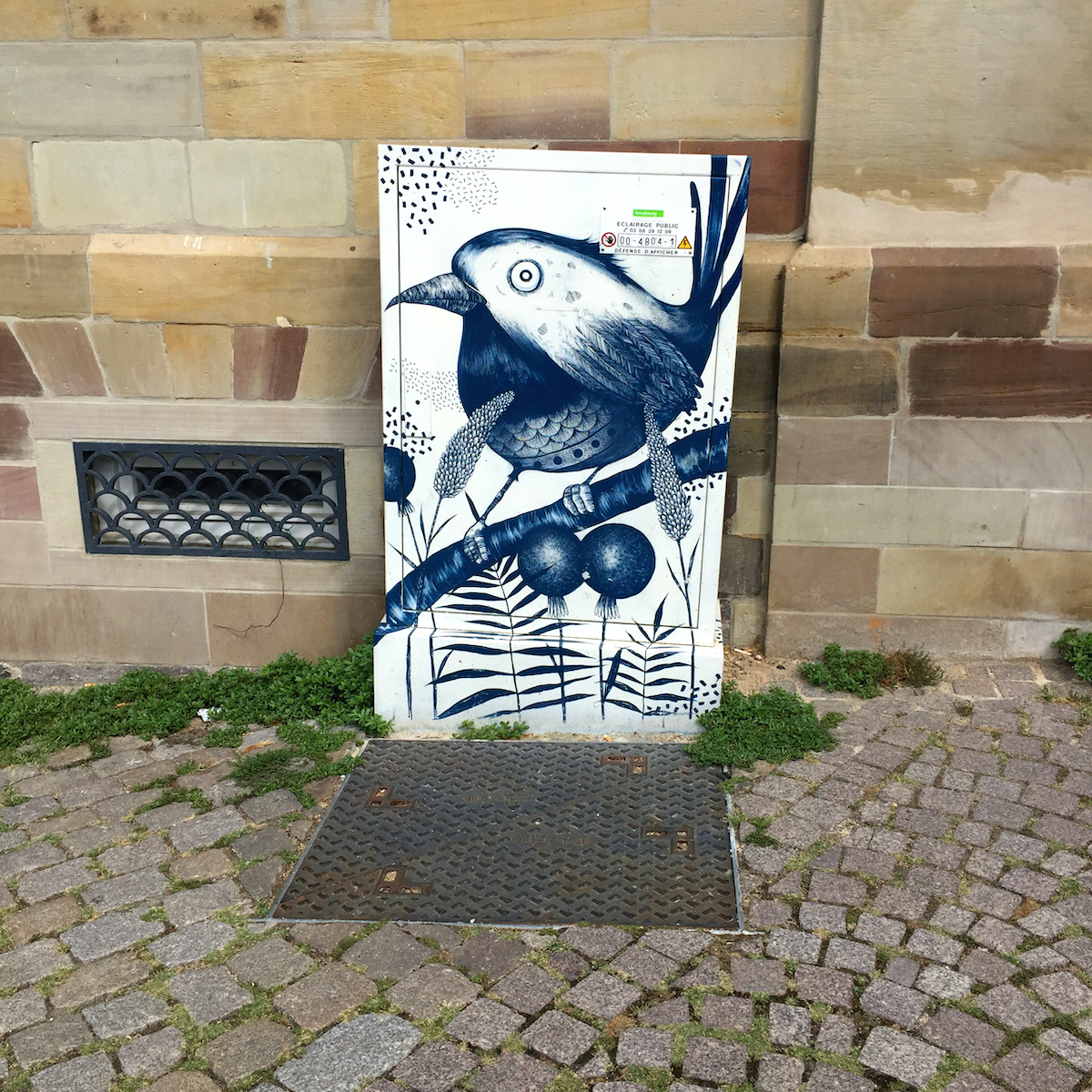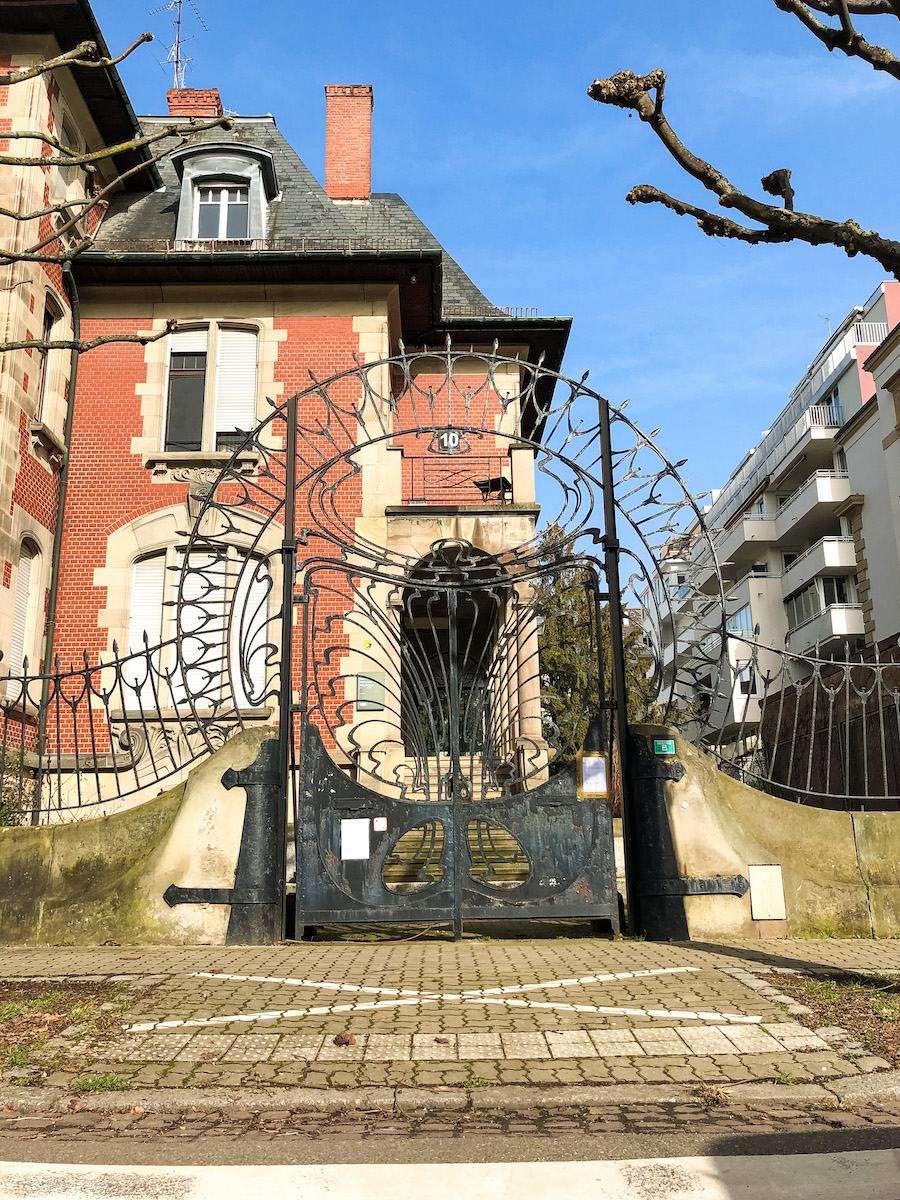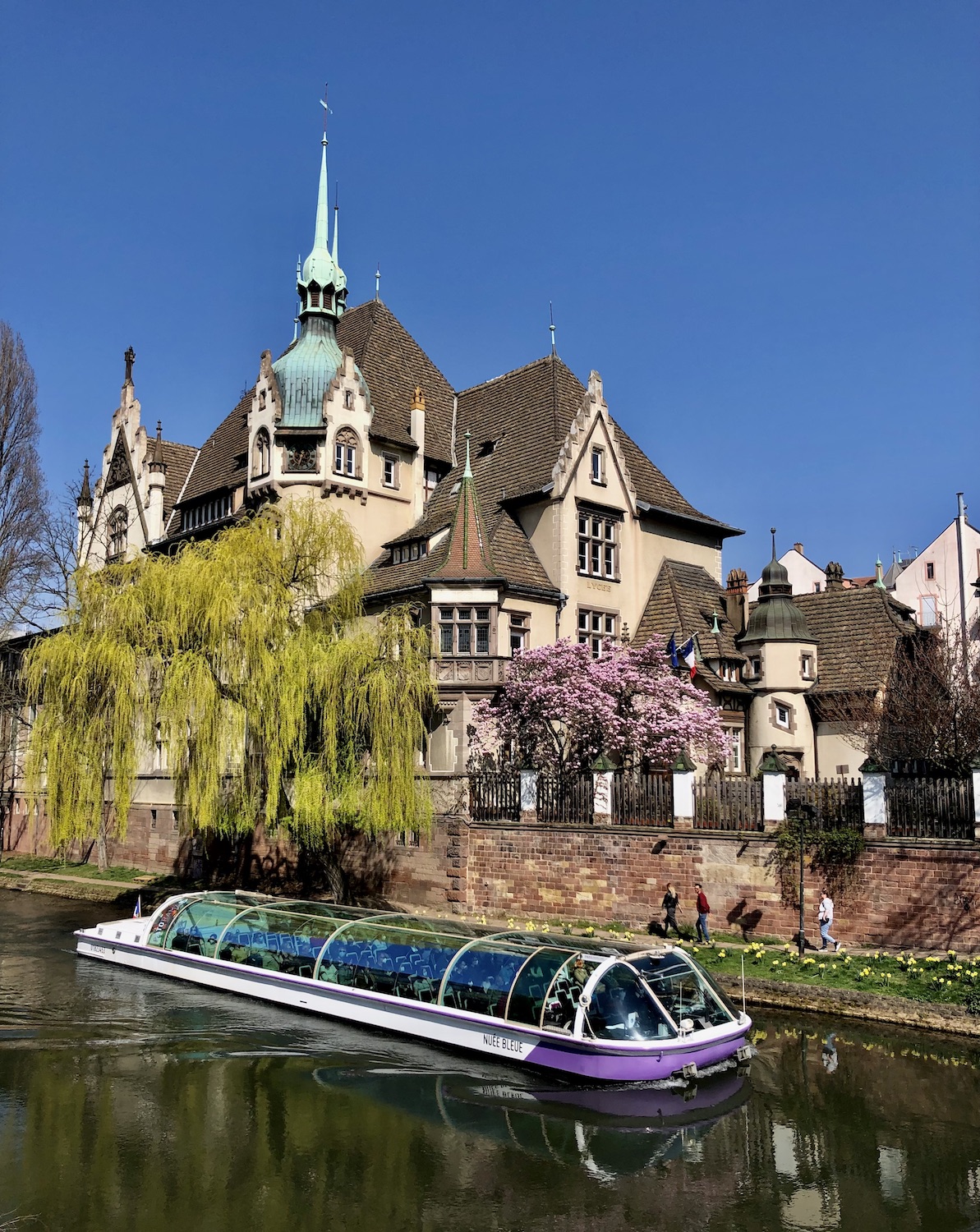Spending a weekend Strasbourg and looking to make the most of your stay? In order to let you explore all the must-see sights and take in the soul of the city, we’ve prepared a 2-day itinerary to explore the city on foot – ideal for a Saturday and a Sunday.
This ultimate guide combines Strasbourg’s must-see spots, unusual discoveries, and hidden gems.
If you’d rather take your time, this itinerary can also be spread out over 3 days, by including the 🔎 OPTIONAL VISITS, for instance.
🗺 A Google Map for each day will help guide you along.
☔️ Looking like it’s going to rain? We’ve also made a list of tips and suggestions for activities to explore the city despite the rain.


About Strasbourg
This European city (with landmarks such as the European Parliament, the Council of Europe, and the European Court of Human Rights), located only a few kilometers from the German border, is endowed with a rich cultural heritage (the Grande Île and the Neustadt quarter are UNESCO World Heritage sites). Strasbourg is the best city in France for cyclists, and the local university welcomes international students from 150 different countries every year.
To make your stay easier, we’ve collected some useful information on our Practical information page.

Day 1: Strasbourg Cathedral, the city-center and la Petite France
📍 Starting point for the 1st day: place de la Cathédrale
Strasbourg Cathedral
Place de la Cathédrale
With its single 142-meter spire, Notre-Dame de Strasbourg was the tallest building in all of Christendom until the 19th century. Victor Hugo found it to be a “wonder of the gigantic and the delicate”.

The “Devil’s Wind”: legend has it that the Wind has been running in circles around the Cathedral ever since the Devil left it behind, centuries ago.
Explore the inside of the Cathedral (free entry from 08:45 to 12:00 and from 14:00 to 17:30):

The pulpit, the many stained-glass windows, including the rose window (measuring 14 meters across) above the central gate, the great organs, the Pillar of Angels depicting the Last Judgment, and the Astronomical Clock right beside it, dating back to 1574 and fully restored in the 19th century (you can view the Astronomical Clock for free, except for the parade of the Apostles).
Try to find these remarkable statues inside the Cathedral: the statue of the Reverend Geiler’s dog (on the pulpit), the sculpture of the man carrying the weight of the Cathedral on his back (at the base of the northern column of the transept), or of a farmer turned to stone, leaning against the railing while gazing at the Pillar of Angels (in the south transept, higher up, to the left of the eastern wall


🔎 OPTIONAL VISIT:
The Astronomical Clock’s parade of the Apostles – for an entrance fee. No parade on Sundays and holidays.
Ticket sales open at 11:20, entrance from place du Château (come early – there will be a line). The doors open at 11:45.
A film is shown to present the clock at 12:00, before the parade at 12:30

Explore the exterior:
The lacework façade in pink sandstone from the Vosges mountains, the spire, the sculptures and low relief carvings, most of which had to be replaced after the French revolution. Take the time to examine the ornate tympana around the doors, particularly the central gate.

Place du Château

3 options:
1) Walk up to the observation deck of the Cathedral:
332 steps for a panoramic view of Strasbourg and the surrounding area. Entrance fee.

2) Visit a museum around place du Château (entrance fee):
• The Musée de l’Œuvre Notre Dame: to continue your exploration of the Cathedral – the 800-year-old Cathedral workshop Fondation de l’Œuvre Notre-Dame was selected for UNESCO‘s register of intangible cultural heritage in 2020
• One of the 3 museums inside Palais Rohan: the Museum of Archaeology, the Museum of Fine Art, or the Museum of Decorative Art

3) Take a boat tour:
• Tickets are available at the Batorama shop (place de la Cathédrale, next to the Tourist Information) or online, on the Batorama website.
• The pier is located by place du Marché aux Poissons, 150m from the Cathedral.

Take a look near the entrance to the Musée de l’Œuvre Notre Dame, where a little Gothic garden lies hidden behind a gate.

Take a break in a café or tea room.
The city center: Explore the Carré d’Or and the pedestrian center
From place du Château, continue to rue des Veaux, then on to passerelle de l’Abreuvoir.

Take a right on quai des Bateliers.
Stop to enjoy the view of Palais Rohan.

Further along the street, slip into the courtyard of hotel La Cour du Corbeau. This stunning 16th-century building was renovated between 2007 and 2009.

🔎 OPTIONAL VISIT:
The Alsatian Museum is a celebration of folk art and traditions from Alsace, staged in historical Strasbourg houses that are connected by wooden stairways and passageways. Entrance fee.
To reach the museum, continue straight ahead, on quai Saint-Nicolas.
Distance: 100m (there and back)

Cross the pont du Corbeau.

🔎 OPTIONAL VISIT:
The Historical Museum presents the history of Strasbourg from the Middle Ages to the founding of the European Institutions. Entrance fee.
The entrance to the Historical Museum is to the right after pont du Corbeau

Walk up rue du Vieux-Marché-aux-Poissons and stop a moment on place des Tripiers. Johann Wolfgang von Goethe stayed in the red house located at number 36, rue du Vieux-Marché-aux-Poissons, in 1770 and 1771.

Take a right on rue Mercière and enjoy the view of the façade of the Cathedral.

The belly-measuring column, or “Büchmesser” dates back to 1567 and was used by members of the City Council to gauge their portliness. Try it yourself, by slipping between the belly-measuring column and the wall. The space is 35 cm wide!

Take a right into rue du Maroquin.

Then, take a left on place du Marché-aux-Poissons. In the square, turn back to see the spire of the Cathedral sticking up above the half-timbered houses.
Continue straight on, across the terrace of the Palais Rohan. Turn left into rue du Bain-aux-Roses and peek through the shop windows at Antiquités Richard – a genuine cabinet of curiosities.

Return to place du Château and place de la Cathédrale by turning left at the end of the street.
On place de la Cathédrale, an artillery shell from the bombing of the city in 1870 is embedded in the façade of the Hôtel Cathédrale (at n°12).

Across the street, don’t miss Maison Kammerzell – one of Strasbourg’s oldest restaurants, with a façade resembling a pirate ship.

From Maison Kammerzell, wander around the narrow streets of the Carré d’Or, the historical district of shops and restaurants around the Cathedral:
- rue du Sanglier
- rue du Chaudron
- rue des Orfèvres
- place du Temple Neuf



From there, turn left on rue de l’Outre, which will take you to Place Kléber, the largest square in the center of Strasbourg. Continue to the front of l’Aubette.


Turn back and continue on rue des Grandes Arcades until you reach the tram tracks.
🔎 OPTIONAL VISIT:
Saint-Pierre-le-Jeune Protestant church is made up of Romanesque, Gothic and Gothic Revival elements.
Don’t miss the nave’s Gothic Revival murals, the Gothic archway in the rood screen, the Baroque choir, and the Romanesque cloister. Saint-Pierre-le-Jeune is open to visitors, except during church services. Free entry from place Saint-Pierre-le-Jeune.
After your visit, walk back towards rue de la Mésange (take a left after petite rue de l’Église).
Distance: 300 m (to the church and back)

Follow rue de la Mésange, with all its luxury boutiques, until you reach place Broglie. In this square you’ll find city hall, the opera, various markets, and the Christmas market in December.

Take rue du Dôme and turn right on rue des Hallebardes.
Continue on rue Gutenberg, then Grand-rue, and turn left on rue du Fossé des Tanneurs to reach la Petite France.
La Petite France
La Petite France is the most picturesque part of old Strasbourg, on the banks of the river Ill.

Discover place Benjamin Zix, with its half-timbered houses from the 16th and 17th centuries.

Thanks to its strategic location on the waterfront, la Petite France was a milling and tanning district from as early as the Middle Ages.

On the roofs of certain half-timbered houses, like la Maison des Tanneurs – which is now a restaurant – you can still spot the ventilated lofts used for tanning leather and drying hides. Incidentally, the streets of la Petite France were named after the different trades that were present in the area for centuries.

Continue to pont du Faisan, a footbridge that turns when needed to let sightseeing boats pass through the canal.

Immediately after the footbridge, take a right through the porch of the Pavillon Régent Petite France hotel. A few steps down to your right, and you’ll be able to stroll along the water on quai de la Petite France.

This dock will lead you to the Ponts Couverts, a set of medieval bridges that are vestiges of the city’s old fortifications, overlooked by four 14th-century towers.
Then, go up to the platform of the Vauban Dam (entrance via place du Quartier Blanc – the stairs are located inside passage Georges Frankhauser). Once you’re up there, the best view of the Ponts Couverts, la Petite France and the Cathedral is by the plaque in the middle of the platform

Go back downstairs and continue towards place Hans-Jean-Arp.

🔎 OPTIONAL VISIT:
The Strasbourg Museum of Modern and Contemporary Art (MAMCS). Entrance fee.
In addition to rooms dedicated to modern and contemporary art, this museum also houses spaces for graphic art, photography, and the works of Gustave Doré.
The entrance to the museum is located on place Hans-Jean Arp.

Take allée Jacmel-Haïti, then rue Sainte-Marguerite. Cross the bridge and go back to Ponts Couverts to your right, via quai Turckheim.

Stop to admire la Maison des Ponts Couverts, giving you an amazing view of the Cathedral. The arbor in front of the house is completely covered in cascading purple wisteria in the spring.

Turn left on quai du Woerthel, passing by the 2 wooden sister houses, which stand out among the more traditional architecture of la Petite France.

Take a left on rue des Moulins, then right on quai des Moulins. Walk on by the Ill until you reach the floodgate and the passerelle des Anciennes Glacières.

Amble along the waterside until pont Saint-Martin.

Climb the stairs (on the left), cross the bridge to snap some pictures, then turn around and go back downstairs to continue your riverside walk.

Go back up to street level by rue Martin Luther and Saint-Thomas’s church.

Explore the interior of the church – free entry, except during church services. When you’re done, continue up rue des Serruriers until you reach place Gutenberg.

In the evening, enjoy a nice restaurant and finish with a drink at a bar.
Day 2: The European Quarter and Neustadt
We recommend that you start your day with a brunch (do check the opening hours of your café of choice, as some are closed on Sundays).
📍 Starting point for the 2nd day: The tram stop “Parlement Européen” (European Parliament), line E towards Robertsau L’Escale or the H bus from Gare Centrale
If you only want to explore the Neustadt quarter (a UNESCO World Heritage site), the starting point is the tram stop “Gallia” (lines C, E and F).
The European Quarter
From the “Parlement Européen” tram stop, take your time to take in the details of the parliament building.

The European Parliament is the legislative body of the European Union, and the only governing body in which the representatives are directly elected by European citizens. Its 751 MEPs represent over 500 million citizens of the European Union. The building’s peculiar architecture represents the construction Europe in progress.

You can actually visit the Hemicycle of the European Parliament, except on Sundays or during parliamentary sessions. No need to book in advance.
Take quai Ernest Bevin along the waterfront (by the tram tracks).

Across the water, you’ll see the back of the Council of Europe appear.

Continue on pont Zaepfel.
You’ll pass in front of the European Court of Human Rights, the court of the Council of Europe. Its mission is to ensure that the Convention for the Protection of Human Rights and Fundamental Freedoms is upheld.

Cross the pont de la Rose blanche, to your right after the tram stop.
🔎 OPTIONAL VISIT:
The exterior of the Russian Orthodox Church of All Saints (16 rue du Général Conrad), a beautiful building in pastels and gold, located between parc de l’Orangerie and the Rhine.
To get there, follow the bike path starting after the bridge, to the left of the restaurant, and walk along the canal.
Distance: 2.6 km (from the bridge and back)

Walk down avenue de l’Europe and stop outside the Council of Europe, which is the principal organization for the defense of human rights on the European continent. It consists of 47 member states, representing more than 800 million Europeans.
🔎 OPTIONAL VISIT:
Parc de l’Orangerie, Strasbourg’s oldest park, stretching over an area of 26 hectares.
Enter the park from the corner of avenue de l’Europe and boulevard du Président Edwards.

Turn right on boulevard Paul Déroulède.
To continue to the Neustadt quarter, you have 2 options:
1) On foot, along the river:
Turn left at the end of boulevard Paul Déroulède to reach quai Rouget de Lisle:
Wander along the water, away from the bustling avenues. Take a rest on a bench and watch the sightseeing boats, canoes and kayaks glide by. Admire the beautiful manors and elegant homes dotted along the riverside.

Make a short detour by rue Schiller to see the stunning Art nouveau gate (at n°10).

Continue on quai du Maire Dietrich and on to the Palais Universitaire.
Distance from boulevard Paul Déroulède to Palais Universitaire: 1,2 km
2) By tram:
Turn right at the end of boulevard Paul Déroulède and walk down quai du Bassin de l’Ill.
Walk back towards pont de la Rose blanche.
Cross the bridge and walk to the “Droits de l’Homme” tram stop.
Take line E towards Campus d’Illkirch and get off at “Gallia”.
Tram ride: 11 minutes.

From the “Gallia” tram stop
From the “Gallia” tram stop, take quai du Maire Dietrich and walk to Palais Universitaire.
Neustadt
The Palais Universitaire marks the entrance to the Neustadt quarter on our itinerary. This formerly German imperial district has been listed as a UNESCO World Heritage site since July 2017.

The historical main building of the University of Strasbourg was at the heart of the Neustadt project when it was built at the end of the 19th century. It was designed as a palace of knowledge and aligned with the Palais du Rhin (located at the other end of avenue de la Liberté), constituting an axis of power and knowledge.

Cross the pont d’Auvergne to admire the view of the river Ill and the Cathedral on your left, and Saint-Paul’s church – built in the Gothic Revival style between 1892 and 1897 – on your right.

Walk down avenue de la Liberté to place de la République. On avenue de la Liberté, you’ll see a wealth of façades mixing different styles, from Historicism to Gothic Revival. Slow down and take in the ornate details: A series of characters, reliefs and silhouettes.

Once you reach place de la République explore all the buildings around the square:
• The National University Library (BNU) with its domed glass skylight. Housing 3 million documents, the BNU is France’s 2nd largest library in terms of the number of works that can be found there.

Inside, the library’s geometric winding staircase is visible from the lobby at the center of the building, looking towards the skylight.

• Palais du Rhin, formerly the emperor’s palace, is a typical example of late 19th-century Germanic neo-Renaissance style.

Enjoy a walk in the park in the middle of the square (where you can enjoy blossoming magnolias in the springtime).

• The Strasbourg National Theater (TNS) averages 15 productions per season, with a total of about 180 performances.

🔎 OPTIONAL VISIT: the Egyptian House
From place de la République, walk down quai Jacques Sturm, continue rue du Général de Castelnau and rue du Général Rapp to the Egyptian House (at n°10).
Turn around and take the same way back to place de la République.
Distance from place de la République to the Egyptian House and back: 2 km


🔎 OPTIONAL VISIT: the Tomi Ungerer Museum – Entrance fee
The Tomi Ungerer Museum and International Illustration Center lets you explore the life’s work of Alsatian illustrator and caricaturist Tomi Ungerer, and more generally the art of illustration.
Take avenue de la Marseillaise.
Before the “Gallia” tram stop, turn right on rue des Pontonniers and walk to pont Saint-Étienne for the best view of Lycée des Pontonniers (to your right when you’re on the bridge). Lycée des Pontonniers – a high school with over 1000 students ranging from first years (age 15/16) to post-secondary preparatory classes – was built in 1902. Isn’t it a little reminiscent of Hogwarts?

From Lycée des Pontonniers, you can easily reach:
• Place de la République: by turning right on quai Lézay-Marnésia
• Place de la Cathédrale and the city center: by walking straight ahead to the Cathedral
If you want to continue your walk…
Turn back towards rue des Pontonniers and walk back to “Gallia”, then take a right on quai des Pêcheurs (have a drink on one of the barges).

Continue down quai des Bateliers (if the weather is nice, soak up the sun for a while on one of the little pontoons along the water, or on le Ponton des Bateliers).

